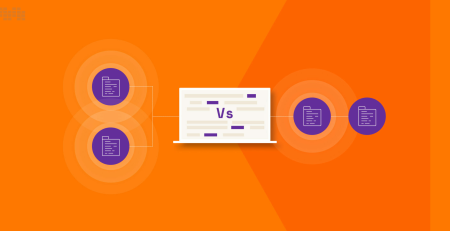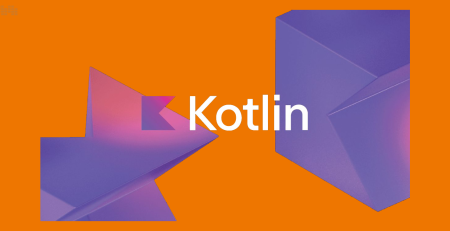Speeding Up Java Applications: 10 Proven Performance Tuning Methods
This blog post will examine 10 tried-and-true performance optimization methods to raise the effectiveness of your Java applications. Java, which is famous for its dependability and adaptability, has applications in many different industries, including web development and business software. Making sure your Java programs run at their best becomes essential as they get more complex in order to provide the greatest user experience. Let’s explore some methods to make Java apps perform quicker and more efficiently.
1. Use Efficient Data Structures
The speed of your Java program might be considerably impacted by your choice of data structures. If you often update or search through elements in a collection, for instance, utilizing a HashMap or HashSet can result in quicker access times than using a List. Choose the proper data structures based on the particular needs of your application.
// Using a HashMap for faster access time
Map<String, Integer> wordFrequencyMap = new HashMap<>();
wordFrequencyMap.put("apple", 5);
wordFrequencyMap.put("orange", 3);
int frequency = wordFrequencyMap.get("apple"); // O(1) time complexity2. Minimize Object Creation
Creating unnecessary objects can lead to increased garbage collection overhead and impact application performance. Reuse objects when possible or consider using object pooling to reduce memory allocation and deallocation.
// Inefficient: Creating a new StringBuilder in each iteration
String result = "";
for (int i = 0; i < 1000; i++) {
result += " " + i;
}
// Efficient: Using StringBuilder to reduce object creation
StringBuilder sb = new StringBuilder();
for (int i = 0; i < 1000; i++) {
sb.append(" ").append(i);
}
String result = sb.toString();3. Optimize Loops
Many Java applications depend on loops as a core component. Loop optimization can result in considerable performance gains. Reduce the amount of iterations as much as possible, relocate invariant computations outside the loop, and choose improved for-loops over collections when it comes to iterating.
// Inefficient: Performing costly calculation inside the loop
int sum = 0;
for (int i = 0; i < 1000; i++) {
sum += expensiveCalculation(i);
}
// Efficient: Moving invariant calculation outside the loop
int sum = 0;
for (int i = 0; i < 1000; i++) {
sum += i;
}
int result = expensiveCalculation(sum);4. Use Buffered I/O Operations
Using buffered I/O streams for reading or writing huge quantities of data can drastically minimize I/O overhead. By reading or writing data in batches as opposed to individually, buffered streams reduce the number of system calls.
// Inefficient: Using unbuffered I/O
FileInputStream fis = new FileInputStream("largefile.txt");
int data;
while ((data = fis.read()) != -1) {
// Process data
}
fis.close();
// Efficient: Using buffered I/O
BufferedInputStream bis = new BufferedInputStream(new FileInputStream("largefile.txt"));
int data;
while ((data = bis.read()) != -1) {
// Process data
}
bis.close();5. Optimize Database Interactions
Database interactions can be a significant bottleneck in Java applications. Minimize the number of database calls, use connection pooling, and optimize your SQL queries to reduce response times.
// Inefficient: Executing multiple database calls in a loop
for (int i = 0; i < ids.length; i++) {
ResultSet rs = executeQuery("SELECT * FROM users WHERE id = " + ids[i]);
// Process data
}
// Efficient: Using a single database call with IN clause
String query = "SELECT * FROM users WHERE id IN (1, 2, 3, ..., n)";
ResultSet rs = executeQuery(query);
while (rs.next()) {
// Process data
}6. Enable Just-In-Time (JIT) Compilation
By translating bytecode to native machine code at runtime, Java’s Just-In-Time (JIT) compiler may greatly boost the speed of your application. To benefit from this improvement, make sure JIT compilation is enabled (it is often set by default).
7. Use StringBuilder for String Concatenation
String concatenation using the + operator can lead to multiple String objects being created, impacting memory usage and performance. Instead, use StringBuilder for efficient string concatenation.
// Inefficient: Using String concatenation in a loop
String result = "";
for (int i = 0; i < 1000; i++) {
result += " " + i;
}
// Efficient: Using StringBuilder
StringBuilder sb = new StringBuilder();
for (int i = 0; i < 1000; i++) {
sb.append(" ").append(i);
}
String result = sb.toString();8. Profile Your Application
Identify performance bottlenecks by profiling your Java application. Use tools like Java VisualVM or Java Mission Control to monitor CPU usage, memory consumption, and identify areas that need optimization.
9. Enable G1 Garbage Collector
Java’s Garbage Collectors play a crucial role in managing memory. The Garbage-First (G1) collector is designed to provide better performance and lower latency for large heaps. Consider enabling G1 Garbage Collector if your application has a large heap size.
10. Use Parallelism and Concurrency
Leverage multi-threading and concurrency to take advantage of modern multi-core processors. Carefully design and synchronize threads to ensure thread-safety and prevent potential issues like race conditions and deadlocks.
// Inefficient: Sequential processing
List<Integer> numbers = Arrays.asList(1, 2, 3, 4, 5);
List<Integer> results = new ArrayList<>();
for (int number : numbers) {
results.add(processData(number));
}
// Efficient: Parallel processing using Java Streams
List<Integer> numbers = Arrays.asList(1, 2, 3, 4, 5);
List<Integer> results = numbers.parallelStream()
.map(this::processData)
.collect(Collectors.toList());Your Java applications’ performance has to be continually improved. You can drastically speed up your Java apps and provide a better user experience by using these 10 tried-and-true performance optimization techniques.
To effectively gauge the impact on performance following improvements, remember to profile your application. Observe JVM upgrades and incorporate newer features that improve Java performance even further. Coding is fun!













Leave a Reply